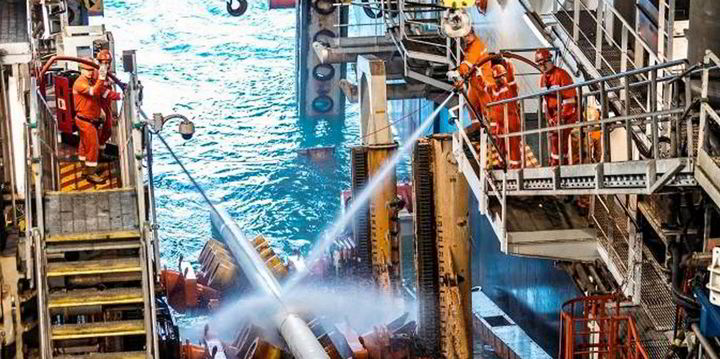Offshore workers on Saipem’s pipelay vessel Castorone, which is installing the Scarborough gas trunkline offshore Australia for Woodside Energy, have reportedly been told there will be no work for almost a month while the gaping hole likely caused by a “software anomaly” is repaired.
Soon after last Tuesday’s incident, which damaged part of the already installed Scarborough pipeline, some 200 construction workers were demobilised from the Castorone and told they would not be needed, according to local daily the West Australian, citing a source not authorised to speak to the media.
The next rotation of offshore workers who would have replaced them has also been also impacted.
The Offshore Alliance union said Saipem needs to ensure that its affected members are not left “one cent out of pocket” as a result of the 30 January incident.
Upstream has approached Italian contractor Saipem for comment on the workers’ situation and whether they would be paid during their time being stood down.
Saipem last week said its initial assessment of the incident suggested that a software anomaly caused the incident that buckled the pipe during installation, damaging part of the already installed trunkline.
Article continues below the advert
The pipelay vessel did not sustain any damages and no injuries were reported.
It is understood that a tensioner — a giant clamp that supports up to 250 tonnes of the pipeline suspended between the vessel and the seabed — failed, the West Australian reported.
Earlier in January, Castorone’s thrusters, part of the vessel’s DP 3 dynamic positioning system, had failed causing it to move lurch uncontrollably during the Scarborough pipeline installation.
A spokesperson for Australia’s offshore industry regulator Nopsema confirmed to Upstream that discrete investigations are under way into each incident.
“Nopsema was notified by both Saipem (as the facility operator) and Woodside (as the operator of the Scarborough Export Trunkline) on 2 January 2024 and on 30 January 2024 respectively about two incidents.
“The notification requirements for the recent incidents on the Castorone facility have been met by both Woodside and Saipem,” the Nopsema spokesperson said.
“Separate investigations have been launched into both events and are ongoing and it would be inappropriate for us to comment at this stage.”
The Castorone in mid-December started work on a 433-kilometre pipeline from the Scarborough gas field to the Pluto gas export plant near Karratha, with work expected to take six months to complete if there were no operational delays.
As of 22 January, approximately 57 kilometres of the pipeline installation had been completed.
Saipem is contracted to install most of the Scarborough project’s pipeline infrastructure with the Castorone, hailed as ‘flagship of its fleet’, although US contractor McDermott will perform some of the Scarborough work with its vessel DLV 2000 as part of a wider 120-day campaign for Woodside.
Scarborough operator Woodside late last month said the US$12 billion gas megaproject was 55% complete and on track to start exporting gas in 2026.
However, analysts at Citi and Goldman Sachs are among those industry observers who believe that maiden liquefied natural gas cargoes from Scarborough will be delayed until 2027 — not least because of the 11th hour legal challenge that had derailed commencement of the pipeline installation work.

